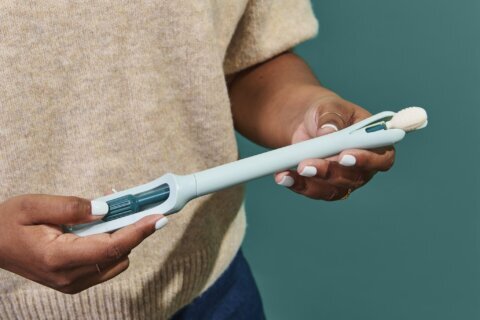As many of us look to build out at-home gyms to maximize our ability to workout regularly, a common question arises: Which machine will give me the best workout bang for my buck?
Exercise bikes, elliptical machines and rowing machines are all popular cardiovascular training tools that can make great additions to your home gym. But if you don’t have space for or can’t afford all three, which one is best?
First, consider what each type of machine targets and how they work.
What Each Exercise Machine Targets
Stationary Bikes
Exercise bikes work the lower body, specifically the glutes, hips, knees, calves and ankles. They also offer the opportunity to engage in non-weight-bearing, cardiovascular exercise. You can burn up to 600 calories per hour (depending on how much you weigh and how hard you’re cycling) when working out on a stationary bike.
There’s a reason that spin classes and at-home stationary bike programs like Peloton and Echelon are so popular, especially among those trying to get fitter or control weight. They can also be a great option for gentler workouts for those starting a new workout routine, getting back in shape and rehabbing an injury.
Rowers
Rowing machines are another way to get in non-weight-bearing exercise. But rather than isolating the lower body, rowing machines offer a superior full-body workout that can burn well over 600 calories per hour depending on your weight and the intensity of your workout. Though a rowing machine can stress your lower back if your form isn’t good, it’s generally considered a very safe way to torch a lot of calories quickly with little or no impact on joints.
Ellipticals
Elliptical machines are the only device in this list that are fully weight-bearing, meaning that you’re standing on your feet while using them.
This requires that you have the coordination and ability to stand up and move on the device without falling over. It also requires that you have enough flexibility in the hips, knees and ankles to manage the motion and your body weight. But elliptical machines are ubiquitous in gyms around the country for good reason — they can burn upwards of 600 to 1,000 calories per hour, depending on your weight and effort intensity. Ellipticals can isolate the lower body or you can add in upper body work with the arm handles. They offer a good, full-body cardiovascular workout.
[See: Gym Weight Machines You Should Start Using ASAP.]
Choosing the Right Machine
Choosing the right option depends on your needs and specific situation. These four considerations can help you make the best selection:
— Space.
Fitness Goals
First, you need to consider what you’re aiming to do with the machine you’re considering acquiring. Are you looking to improve overall cardiovascular fitness? Build strength? Train for an event? Lose weight? Rehab an injury? These machines can help you achieve any and all of these goals, but one machine might be better suited to a certain goal than another.
For example, if you’re rehabbing a knee or ankle injury or getting back into shape after taking time off for such an injury, you might do better with a stationary bike rather than an elliptical machine. Sitting on a bike seat will put less pressure on the injured lower limb than standing on an elliptical machine.
If you’re looking for a full-body workout, a rowing machine or an elliptical machine may offer a stronger claim than a bike that provides a great lower body workout. But it doesn’t do as much for the upper body.
“If you’re physically able to, the rower may be one of the best pieces of cardio equipment due to its low impact demands on the human body and total body requirements for movement efficiency,” says Matt Camargo, director of ProSport Performance at ProSport Physical Therapy and Performance in Southern California. “Whether the goals are for sport performance or general fitness and health — the rower can safely and effectively be a great tool within training.”
Plus, he says, rowing forces you to “learn how to be efficient with total body movements as the body is getting fatigued.” This means rowing is a great way to get an efficient, full-body workout.
[READ: Best Foods to Eat Before and After Your Workout.]
Injury Risk and Prevention
You also need to consider how these different machines could stress your body and potentially lead to injury if you overdo it, ramp up too quickly or don’t use proper form.
Dr. Michael Nieto, a primary sports medicine physician with Hoag Orthopedic Institute in Orange County, California, says all three machines are low impact, so “as sports medicine physicians we tend to recommend them to patients with joint pain.”
This is a key difference between exercise machines like stationary bikes and ellipticals and running, for example. Running is a common way for people who don’t want to go to a gym to get exercise, but it has some drawbacks, Camargo says.
Running for “miles outside can result in achy joints,” and as such, the impact placed on the joints by the pounding action of running can lead to injury. Even if you’re a runner, “replacing or mixing in some sessions with the exercise bike, rower and/or elliptical can offer well-needed relief on your joints compared to running.”
Keeping an eye to potential injury is part of the equation when figuring out what the best exercise for your body is, especially knowing where your own problem areas might be. Camargo notes that rowers are good for people who have “a history of ankle and knee issues,” but may not be so great for people who have a history of lower back issues because you must hinge from the hip and back to perform the motion correctly, and that could exacerbate an existing issue.
Similarly, he explains that an “exercise bike is low impact and is a good alternative to running. Due to the design of the exercise bike, it’s great for older populations or individuals recovering from lower body injuries and who have difficulty with balance.”
The elliptical, on the other hand, “requires a decent amount of coordination,” since you’ll be standing while you’re using it. To do this safely, you need to have “sufficient lower body stability,” Camargo says.
And don’t forget to start out slowly and build up to avoid getting hurt on any of these machines. “Overuse injuries can be common with these machines, especially as you increase the frequency and volume of exercise too quickly early on in your training program,” Nieto says. Give your body time to adjust to any new workout routine.
Nieto says that some people experience lower back pain with all three of these machines, “but it’s most commonly seen with the rower and stationary bike.”
To help alleviate this potential issue, “it’s important to ensure that you have proper seat and handlebar adjustments to allow your body to have proper positioning throughout the range of motion.”
With the bike and rowing machine, you’re more likely to develop a condition called iliotibial band friction syndrome, which occurs when the IT band is overused. “The iliotibial band is a thick, fibrous tissue that runs along the lateral (outside) hip to the lower leg.” When this syndrome develops, it usually causes pain on the outside part of the knee.
People who use rowing machines and stationary bikes are also at risk for tendonitis of the wrist, Nieto says. “This is caused by poor wrist position on the handle.” This pain can be alleviated with:
— Alternating grip positions.
— Rest.
— Anti-inflammatory medications.
— Wrist splints.
If those techniques don’t help, your doctor may recommend a cortisone injection. This means injecting a steroid into the site of pain to help fight inflammation at the source. This simple in-office procedure can alleviate a lot of pain, but has some limitations that you should discuss with your doctor.
Working with a trainer or coach can help you learn correct form and ergonomics for any and all machines you’re using and other exercises you may be doing.
No matter which machine you chose to use, “to prevent overuse injuries, it’s important to take rest days each week from the exercise machine,” Nieto says. In addition, he says you should work opposing muscles to help balance out muscle development and stretch to keep muscles and tendons limber.
[Read: 5 Realistic Fitness Goals.]
Space
Depending on how much space you have in your home to devote to building out your gym, that can greatly influence which piece or pieces of equipment — and which specific brand — you end up choosing. There’s a slew of options out there, with some manufacturers aiming to provide smaller machines designed for apartments and other small spaces. Do some research to find out what’s available and what might work best.
Camargo says that if space is an issue, but you’re trying to get your heart rate up to boost cardiovascular health, the rower may be your best bet. “The rower is the most space efficient due to the ability to stand it up vertically and/or hang it on the wall. The rower can also be taken apart into two separate pieces if more space is needed,” he explains. Do some measuring and figure out which one will work best for your situation.
Preference
To determine which piece of equipment will best meet your specific needs and goals, Camargo recommends working with a fitness professional who can perform a fitness consultation to provide tailored guidance.
You should also try out all three options and see which one seems most fun and engaging to you. Which one can you see yourself hopping on several times a week? Which one is fun, easy to use consistently and accessible? All of these factors can help you find the right piece of exercise equipment for you because ultimately, the best workout is the one you can stick with long term.
More from U.S. News
12 Before and After Workout Tips to Boost Results
8 Common Form Mistakes That Are Wrecking Your Workout
Exercise Bike vs. Rower vs. Elliptical: Which Is Best? originally appeared on usnews.com
Update 07/19/21: This piece was previously published at an earlier date and has been updated with new information.







